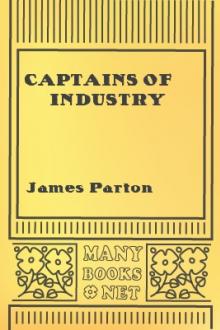Speeches, James Clear, Wolves Forever [best ereader manga TXT] 📗

- Author: James Clear, Wolves Forever
Book online «Speeches, James Clear, Wolves Forever [best ereader manga TXT] 📗». Author James Clear, Wolves Forever
Now, today although the knowledge or the theory of what goes on outside the nucleus of the atom seems precise and complete enough, in the sense that given enough time, we can calculate anything as accurately as it can be measured, it turns out that the forces between neutrons and protons, which constitute the nucleus, are not so completely known and are not understood at all well. And that's what I mean by– that is, that we cannot today, we do not today understand the forces between neutrons and protons to the extent that if you wanted me to, and give me enough time and computers, I could calculate exactly the energy levels of carbon or something like that. Because we don't know enough about that. Although we can do the corresponding thing for the energy levels of the outside electrons of the atom, we cannot for the nuclei. So the nuclear forces are still not understood very well.
Now in order to find out more about that, experimenters have gone on. And they have to study phenomena at very high energy, where they hit neutrons and protons together at very high energy and produced peculiar things. And by studying those peculiar things, we hope to understand better the forces between neutrons and protons.
Well, a Pandora's box has been opened by these experiments, although all we really wanted was to get a better idea of the forces between neutrons and protons. When we hit these things together hard, we discover that there are more particles in the world. And as a matter of fact, in this column there was plus over four dozen other particles have been dredged up in an attempt to understand these. And these four dozen other are put in this column, because they've very relevant to the neutron proton problem. They interact very much with neutrons and protons. And they've got something to do with the force between neutrons and protons. So we've got a little bit too much.
In addition to that, while the dredge was digging up all this mud over here, it picked up a couple of pieces that are not wanted and are irrelevant to the problem of nuclear forces. And one of them is called a mu meson, or a muon. And the other was a neutrino, which goes with it.
There are two kinds of neutrinos, one which goes with the electron, and one which goes with the mu meson. Incidentally, most amazingly, all the laws of the muon and its neutrino are now known. As far as we can tell experimentally, the law is they behave precisely the same as the electron and its neutrino, except that the mass of the mu meson is 207 times heavier than the electron.
And that's the only difference known between those objects. But it's rather curious. But I can't say anymore, because nobody knows anymore.
Now four dozen other particles is a frightening array– plus the anti-particles– is a frightening array of things. But it turns out, they have various names, mesons, pions, kaons, lambda, sigma– four dozen particles, there are going to be a lot of names.
But it turns out that these particles come in families, so it helps us a little bit. Actually, some of these so-called particles last such a short time that there are debates whether it's in fact possible to define their very existence and whether it's a particle or not. But I won't enter into that debate.
In order to illustrate the family idea, I take the two-part cases of a neutron and a proton. The neutron and proton have the same mass, within 0.10% or so. One is 1836, the other is 1839 times as heavy as an electron roughly, if I remember the numbers.
But the thing that's very remarkable is this. That for the nuclear forces, which are the strong forces inside the nucleus, the force between a pair of protons– two protons– is the same as between a proton and a neutron and is the same again between a neutron and a neutron. In other words, for the strong nuclear forces, you can't tell a proton from a neutron.
Or a symmetry law– neutrons may be substituted for protons, without changing anything, provided you're only talking about the strong forces. If you're talking about electrical forces, oh no. If you change a neutron for a proton, you have a terrible difference. Because the proton carries electrical charge, and a neutron doesn't. So by electric measurement, immediately you can see the difference between a proton and a neutron.
So this symmetry, that you can replace neutrons by protons, is what we call an approximate symmetry. It's right for the strong interactions in nuclear forces. But it's not right in some deep sense of nature, because it doesn't work for the electricity. It's just called a partial symmetry. And we have to struggle with these partial symmetries.
Now the families have been extended. It turns out that the substitution neutron proton can be extended to substitution over a wider range of particles. But the accuracy is still lower. You see, that neutrons can always be substituted for protons is only approximate. It's not true for electricity. And that the wider substitutions that have been discovered are legitimate is still more poor, a very poor symmetry, not very accurate. But they have helped to gather the particles into families, and thus to locate places where particles are missing and to help to discover the new ones.
This kind of game, of roughly guessing at family relations and so on, is illustrative of a kind of preliminary sparring which one does with nature, before really discovering some deep and fundamental law. Before you get the deeper discoveries, examples are very important in the previous history of science. For instance, Mendeleev's discovery of the periodic table for the elements is analogous to this game. It is the first step, but the complete description of the reason for the periodic table came much later, with atomic theory.
In the same way, organization of the knowledge of nuclear levels and characteristics was made by Maria Mayer and Jensen, in what they call the shell model of nuclei some years ago. And it's an analogous game, in which a reduction of a complexity is made by some approximate guesses. And that's the way it stands today.
In addition to these things, then we have all these principles that we were talking about before. Principle of relativity, that the things must behave quantum mechanically. And combining that with the relativity that all conservation laws must be local. And so when we put all these principles together, we discover there are too many. They are inconsistent with each other.
It seems as if, if we add quantum mechanics plus relativity plus the proposition that everything has to be local plus a number of tacit assumptions– which we can't really find out, because we are prejudiced, we don't see what they are, and it's hard to say what they are. Adding it all together we get inconsistency, because we really get infinity for various things when we calculate them. Well, if we get infinity, how will we ever agree that this agrees with nature?
It turns out that it's possible to sweep the infinities under the rug by a certain crude skill. And temporarily, we're able to keep on calculating. But the fact of the matter is that all the principles that I told you up till now, if put together, plus some tacit assumptions that we don't know, it gives trouble. They cannot mutually consistent, nice problem.
An example of the tacit assumptions that we don't know what the significance is, such propositions are the following. If you calculate the chance for every possibility– there is 50% probably this will happen, 25% that'll happen– it should add up to one. If you add all the alternatives, you should get 100% probability. That seems reasonable, but reasonable things are where the trouble always is.
Another proposition is that the energy of something must always be positive, it can't be negative. Another proposition that is probably added in, in order before we get inconsistency, is what's called causality, which is something like the idea that effects cannot proceed their causes. Actually, no one has made a model, in which you disregard the proposition about the probability, or you disregard the causality, which is also consistent with quantum mechanics, relativity, locality, and so on. So we really do not know exactly what it is we're assuming that gives us the difficulty producing infinities.
OK, now that's the present situation. Now I'm going to discuss how we would look for a new law. In general, we look for a new law by the following process. First, we guess it.
Then, we compute– well, don't laugh, that's really true. Then we compute the consequences of the guess, to see what, if this is right, if this law that we guessed is right, we see what it would imply. And then we compare those computation results to nature. Or we say, compare to experiment or experience. Compare it directly with observation, to see if it works.
If it disagrees with experiment, it's wrong. And that simple statement is the key to science. It doesn't make any difference how beautiful your guess is, it doesn't make any difference how smart you are, who made the guess, or what his name is. If it disagrees with experiment, it's wrong. That's all there is to it.
It's true, however, that one has to check a little bit, to make sure that it's wrong. Because someone who did the experiment may have reported incorrectly. Or there may have been some feature in the experiment that wasn't noticed, like some kind of dirt and so on. You have to obviously check.
Furthermore, the man who computed the consequences may have been the same one that made the guesses, may have made some mistake in the analysis. Those are obvious remarks. So when I say, if it disagrees with experiment, it's wrong, I mean after the experiment has been checked, the calculations have been checked, and the thing has been rubbed back and forth a few times to make sure that the consequences are logical consequences from the guess, and that, in fact, it disagrees with our very carefully checked experiment.
This will give you somewhat the wrong impression of science. It means that we keep on guessing possibilities and comparing to experiments. And this is– to put an experiment on a little bit weak position. It turns out that the experimenters have a certain individual character. They like to do experiments, even if nobody's guessed yet.
So it's very often true that experiments in a region in which people know the theorist doesn't know anything, nobody has guessed yet– for instance, we may have guessed all these laws, but we don't know whether they really work at very high energy because it's just a good guess that they work at high energy. So experimenters say, let's try higher energy. And therefore experiment produces trouble every once in a while. That is it produces a discovery that one of things that we thought of is wrong, so an experiment can produce unexpected results. And that starts us guessing again.
For instance, an unexpected result is the mu meson and its neutrino, which was not guessed at by anybody, whatever, before it was discovered. And still nobody has any method of guessing, by which this is a natural thing.
Now you see, of course, that with this method, we can disprove any definite theory. If you have a definite theory and a real guess, from which you can really compute consequences, which could be compared to experiment, then in principle, we can get rid of any theory. We can always prove any definite theory wrong.
Notice, however, we never prove it right. Suppose





Comments (0)